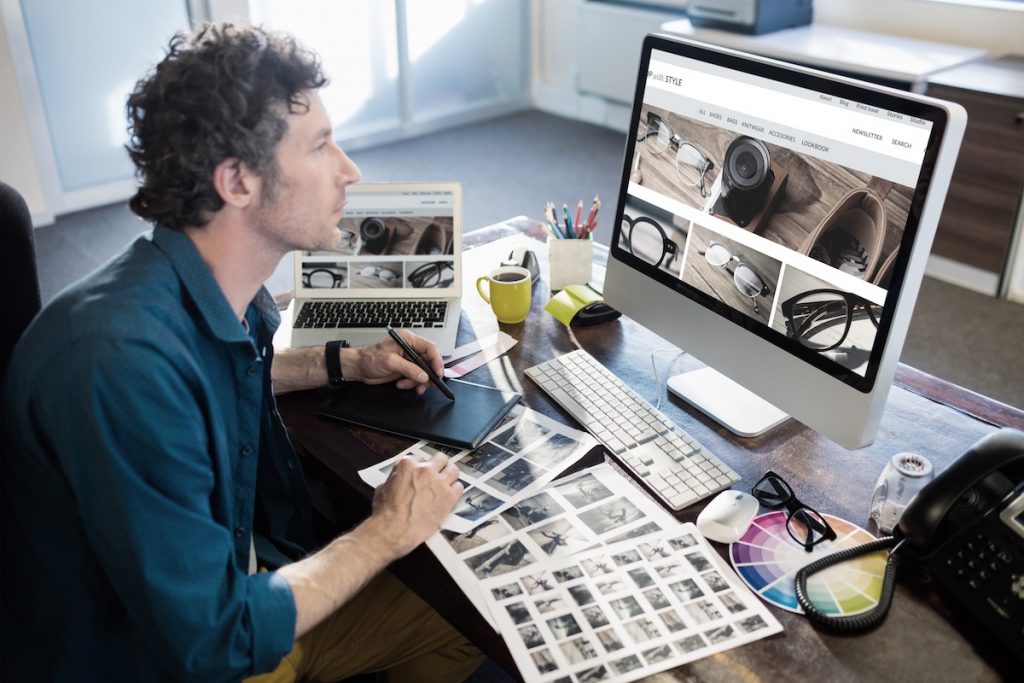
A cover letter and resume are ubiquitous in job applications. But what can sometimes be the most powerful component of an application is often forgotten – the portfolio. Who needs a portfolio? Anyone working in a creative field – marketers, copywriters, designers, photographers, and social media specialists. If you’re working in fashion this likely includes you.
If you are applying to any kind of creative role – always include your portfolio. Even if it is not requested as part of an application – include it. You are not going to be penalized for sharing your work, but it could very well be the piece of the puzzle that sets you apart from your competition. Additionally, your portfolio should be a constant work in progress. Keep it up to date, you never know when it could come in handy.
Here is our step-by-step guide to creating a stunning portfolio:
Step 1: Curate your portfolio
Your portfolio should include the work you are most proud of, the work that a potential employer will look at and think, “How innovative!”, “I love the creativity!”, “This is the kind of work I want my team to be producing.”
This step can be something you put together as you go. Create a folder on your desktop to store your work to access when you create your portfolio.
How many items you include is up to you, but consider this: you want to show your range, but you don’t want to overwhelm with too many options. Three to five pieces is usually a good number to strive for.
What you include also depends on your goals. For example, if you are just starting out as a fashion photographer, but you’re not sure yet if you’d like to do edgy editorial shoots, or street-style, or event photography, you may want to choose a broader range. This will allow you to book more diverse opportunities, so you can decide on your own personal style. In contrast, if you know exactly what your forte is and you only want to book specific jobs, don’t include your earlier work that reflects something you’re no longer interested in pursuing. Your portfolio should be able to speak for itself and convey your abilities to the beholder.
Step 2: Decide On Your Medium
This means a website vs. pdf. document. Gone are the days of a print portfolio. You can either choose to build a website, or create a shareable document to include in your application. Each of these options comes with its own benefits.
A Website Portfolio
Pros: website is great because it’s searchable and easy to share. It can be a link in your social media profile, on your LinkedIn, you should also link it on your resume and cover letter. Websites can be easily updated and
Cons: They can be expensive, you will pay for a personalized URL if you choose to go for that and if you want it designed to your exact specifications, you may need to hire a designer, or developer to put it together for you. Alternatively, if you choose to go with a template these can be done for free, but you will have less control over the design.
A PDF Portfolio
Pros: These are very easy to build and you have complete control over the design. If you are handy with design tools like Illustrator, Photoshop, or Canva you can create your own completely to your own vision and specifications.
Cons: These aren’t shareable, or searchable in the same way as a website. For example, it’s not something you can include a link to in your Instagram bio to share with your network.
Step 3: Design
This is the fun part. Here you get to personalize your portfolio and make it yours! Decide on a colour scheme, font, layout. I would recommend approaching this from a branding perspective. Choose colours and fonts that speak to your personal brand. If you are super polished and professional, choose a sleek design with minimalist colours. If your personal brand airs more on a fun and quirky style, let your brand exude those qualities.
When it comes to format, this depends on your profession. If you’re a photographer you’re going to want to go with something with minimal text and large images. For a website for example, opt for a grid of photos which can be expanded to view each individually. If you are a fashion designer you might want to do a page to focus on one design at a time, include your illustrations, fabric swatches, photographs of the garment on a model and a small bit of text to describe each design (fabrics, colour ways, size runs, etc.). If you work in marketing you will want a design that accommodates visuals and copy. You will also want to include analytics so your reader can see how your work performed. It’s also great to include links where possible to see your campaign in action.
Step 4: Share!
The last step is getting your portfolio out there. If you have an online portfolio, include it in your LinkedIn and your social media bios. Include links in your resume and cover letter and always include a PDF portfolio in your application package when you submit.
Creating your portfolio doesn’t have to feel intimidating, in just four easy steps you can share your amazing work with potential employers. So start curating, conceptualizing your design and most importantly, don’t be afraid to share that content with your network!
If graphic design isn’t really your thing, or you just don’t have the time for Step 3, select one of the beautiful application package templates that includes portfolio design from Style Nine to Five.
Sheila O’Neill is a creative, innovative and inspiring storyteller with a background in fashion.
Feature Image: Adobe Stock
